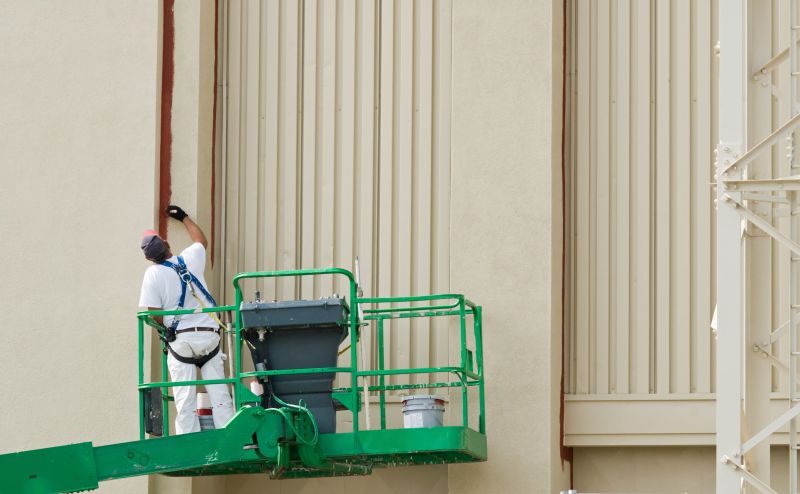Popular Load Bearing Wall Reinforcement Options for Builders
Discover reliable products that enhance the durability and safety of load bearing walls in residential and commercial projects.
 Load bearing walls are essential structural components within many buildings, providing support for floors, ceilings, and roofs. Properly selecting products for load bearing walls ensures safety, stability, and compliance with building codes. These products include a variety of materials and hardware designed to reinforce, support, or modify load bearing structures. From traditional wood and steel supports to specialized anchors and reinforcement systems, understanding the options available can help in making informed decisions for construction or renovation projects.
Load bearing walls are essential structural components within many buildings, providing support for floors, ceilings, and roofs. Properly selecting products for load bearing walls ensures safety, stability, and compliance with building codes. These products include a variety of materials and hardware designed to reinforce, support, or modify load bearing structures. From traditional wood and steel supports to specialized anchors and reinforcement systems, understanding the options available can help in making informed decisions for construction or renovation projects.
Top Overall Option
Structural Support Beams
Structural support beams, made from high-strength steel or engineered wood, are versatile options for load bearing walls. They are designed to distribute weight effectively and can be customized to fit various dimensions and load requirements. Properly selected and installed support beams can enhance the stability of a structure, especially during renovations or when modifying existing walls. These products often come with detailed installation guidelines to ensure safety and performance.
Types of Products For Load Bearing Walls
Steel Support Beams
Heavy-duty steel beams provide strong support for load bearing walls, suitable for both residential and commercial applications.
Engineered Wood Beams
Engineered wood beams offer a lightweight yet durable alternative to traditional lumber, often used in residential projects.
Concrete Lintels
Concrete lintels are used to support openings such as doors and windows within load bearing walls.
Wall Anchors
Wall anchors help reinforce load bearing walls by distributing weight and providing additional stability.
Reinforcement Plates
Reinforcement plates are used to strengthen existing load bearing walls during repairs or modifications.
Adjustable Support Posts
Adjustable support posts are versatile supports that can be customized to different heights and loads.
Concrete Blocks
Concrete blocks are commonly used in constructing or reinforcing load bearing walls due to their strength and durability.
Metal Straps
Metal straps help secure and reinforce load bearing walls, especially during seismic or high-wind conditions.
Support Columns
Support columns transfer loads from load bearing walls to foundations, often used in basement or open-plan designs.
Foundation Bolts
Foundation bolts secure load bearing walls to the foundation, ensuring stability and safety.
Structural Adhesives
Structural adhesives are used to bond components in load bearing applications, providing additional support.
Load Distribution Plates
Load distribution plates help spread weight across larger areas, reducing stress on individual components.
Popular Choices
Steel support beams are frequently chosen for their strength and adaptability in various load bearing applications.
Engineered wood beams are popular for their ease of installation and consistent quality, often used in residential renovations.
Concrete lintels are commonly used over door and window openings in load bearing walls.
Wall anchors are widely used to reinforce load bearing walls and improve stability.
Reinforcement plates are a go-to choice for strengthening existing load bearing structures.
Adjustable support posts are favored for their flexibility in supporting varying load requirements.
Concrete blocks are a common material for constructing load bearing walls due to their robustness.
Metal straps are often used in seismic reinforcement or to secure wall components.
Support columns are essential in transferring loads in open or basement spaces.
Foundation bolts are critical for anchoring load bearing walls securely to the foundation.
Structural adhesives are increasingly used for bonding components in load bearing applications.
Load distribution plates are used to evenly spread weight and prevent stress concentrations.
In addition to the primary materials, accessories such as reinforcement plates, wall anchors, and adjustable supports play a critical role in ensuring the integrity of load bearing walls. These components are used to distribute weight evenly, prevent shifting, and accommodate modifications or repairs. It's important to consider the specific requirements of your project, including load capacity, compatibility with existing structures, and ease of installation.
Selecting the right products also involves evaluating the compatibility of materials, the dimensions needed for your walls, and the anticipated load. Proper installation techniques are crucial for maximizing safety and performance. Consulting with structural engineers or building professionals can provide valuable insights, especially for complex or high-load applications. Whether you're undertaking a small renovation or a large-scale construction, choosing the right load bearing wall products is a fundamental step toward ensuring long-term stability and safety.
Key Buying Considerations
- Determine the load capacity required for your specific application to ensure safety and performance.
- Evaluate the compatibility of the support materials with existing structures and building codes.
- Consider the dimensions and sizes needed to fit within your load bearing wall design.
- Assess the ease of installation and whether specialized tools or expertise are necessary.
- Choose materials that offer durability and resistance to environmental factors if applicable.
- Review manufacturer specifications to understand maximum load ratings and limitations.
- Think about future modifications or expansions that may influence product selection.
- Ensure that the products meet local building regulations and standards.
- Select products with appropriate safety margins to accommodate unexpected loads or shifts.
- Evaluate cost-effectiveness while prioritizing quality and safety features.
- Consult with structural engineers or building professionals for complex or high-load projects.
- Consider the availability of replacement parts or accessories for ongoing maintenance.
- Review customer feedback and product reviews for insights into real-world performance.
- Verify warranty and support options provided by manufacturers or suppliers.
- Assess the aesthetic impact if visible components are part of the design.
This content contains affiliate links and may earn a commission at no additional cost to you.
